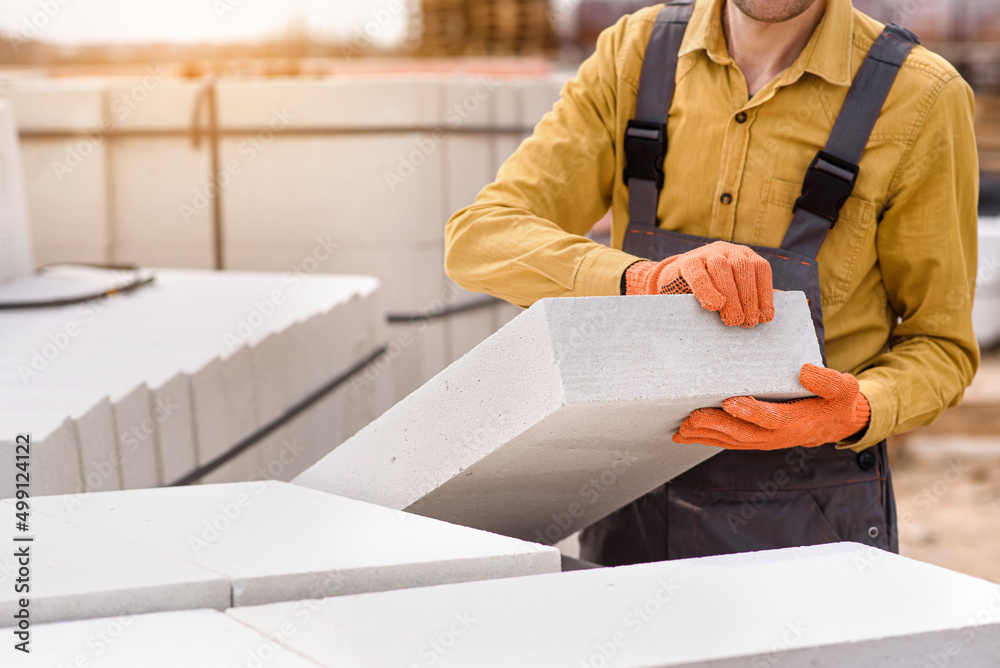Introduction
As winter descends, the demand for resilient construction materials becomes paramount. Enter AAC blocks, a formidable solution for winter construction challenges. This article navigates why AAC blocks are the perfect fit for winter construction, exploring their thermal insulation properties, lightweight nature, moisture resistance, rapid construction pace, energy efficiency, environmental sustainability, compatibility with cold weather mortars, and real-world success stories.
Table of Contents
Thermal Insulation Properties for Winter Construction
Cellular Structure and Heat Retention in Winter
In the realm of construction in the winter season, AAC blocks shine with their unique cellular structure, providing impeccable heat retention. The intricate network of air pockets within the blocks acts as a thermal shield, ensuring a warmer interior during the chilly winter months.
Reduced Heat Loss during Winter Builds with AAC Blocks
Winter construction often grapples with heat loss challenges. AAC blocks, with their exceptional insulation capabilities, minimize heat loss during winter builds, creating a cocoon of warmth within the structure and contributing to energy efficiency.

Lightweight Nature for Easy Handling in Cold Conditions
Low-Density Advantage in Winter Construction
The lightweight nature of AAC blocks emerges as a pivotal advantage in winter construction. Their low density eases the physical strain on construction workers, ensuring smoother operations even in freezing temperatures.
Benefits of AAC Blocks for Cold Weather Handling
When winter’s grasp tightens, the advantages of AAC’s lightweight composition become evident. From transportation to on-site manoeuvring, the ease of handling AAC blocks ensures that construction projects proceed with efficiency, defying the challenges posed by cold weather.
Moisture Resistance and Prevention of Cold-Related Damages in Winter Construction
AAC’s Moisture Resistance in Winter Construction
Winter often brings heightened moisture levels. AAC blocks, resilient to moisture, safeguard structures from potential damages, presenting a crucial advantage for winter construction and ensuring the longevity of the building.
Avoiding Winter-related Structural Issues with AAC Blocks
By preventing moisture ingress, AAC blocks play a pivotal role in averting structural issues that can arise in cold climates. This not only preserves the integrity of the construction but also minimizes the need for extensive repairs, especially during winter.

Rapid Construction Pace in Cold Weather
Quick Setting Time of AAC Blocks in Winter Construction
Time becomes a critical factor in winter, and AAC blocks offer a swift solution with their quick setting time. This characteristic accelerates the construction pace, reducing overall project duration and mitigating the challenges of winter weather.
Accelerating Project Timelines in Winter with AAC Blocks
With AAC blocks, construction projects can progress at an expedited pace even in cold weather. This not only meets deadlines but also translates into tangible cost savings, making them an economically viable choice for construction projects in the winter season.
Energy Efficiency and Cost Savings
Impact of AAC Blocks on Heating Costs in Winter Construction
The thermal efficiency of AAC blocks directly impacts heating costs during winter. These blocks contribute to a more energy-efficient building by minimising heat loss, resulting in lower heating bills and making them a financially savvy choice for winter construction projects.
Long-term Financial Advantages for Winter Building Projects
While the initial investment in AAC blocks may be slightly higher, the long-term financial advantages become evident over time. Reduced energy consumption, lower maintenance costs, and prolonged structural integrity contribute to substantial savings in the lifecycle of a building, particularly during the winter season.

Environmental Sustainability of AAC Blocks for Winter Construction
Reduced Carbon Footprint with AAC Blocks
Beyond immediate benefits, AAC blocks align with sustainable construction practices, even in winter. The manufacturing process of these blocks generates a reduced carbon footprint compared to traditional building materials, making them an environmentally responsible choice for winter construction.
Sustainable Building Practices with AAC Blocks in Winter
Choosing AAC blocks extends the commitment to environmental sustainability into the colder months. The combination of energy efficiency, reduced resource consumption, and recyclability makes them a cornerstone of green building practices, even in winter.
Compatibility with Cold Weather Mortars for Winter Construction
Choosing the Right Mortar Mix for Winter AAC Construction
The success of construction with AAC blocks hinges on the selection of compatible mortars. Choosing the right mortar mix ensures optimal bonding and structural stability, mitigating any challenges that may arise from cold weather conditions.
Enhancing Structural Integrity in Low Temperatures with AAC Blocks
AAC blocks, when paired with cold weather mortars, create a robust system that enhances structural integrity even in freezing temperatures. This compatibility ensures that buildings withstand the rigours of winter without compromising safety or durability.
Conclusion
In conclusion, the choice of AAC blocks from NXTBLOC for winter construction is rooted in a myriad of advantages. From their thermal insulation properties and lightweight nature to moisture resistance, rapid construction pace, energy efficiency, environmental sustainability, compatibility with cold weather mortars, and real-world success stories, AAC blocks prove to be indispensable assets in the challenging realm of winter building projects. As the construction industry embraces innovation, AAC blocks by NXTBLOC stand tall, offering a blend of functionality, efficiency, and environmental responsibility
